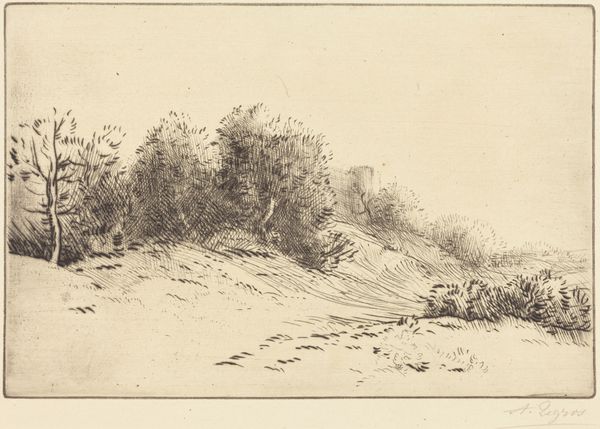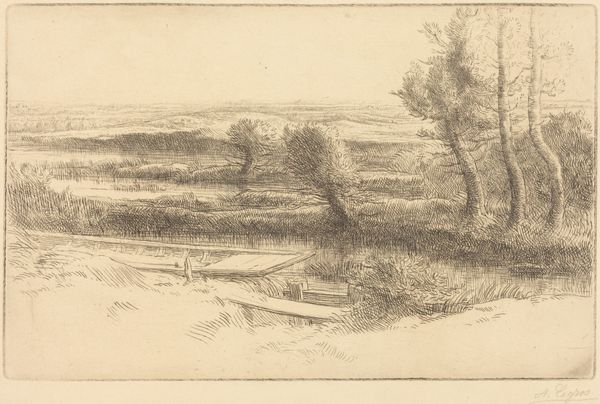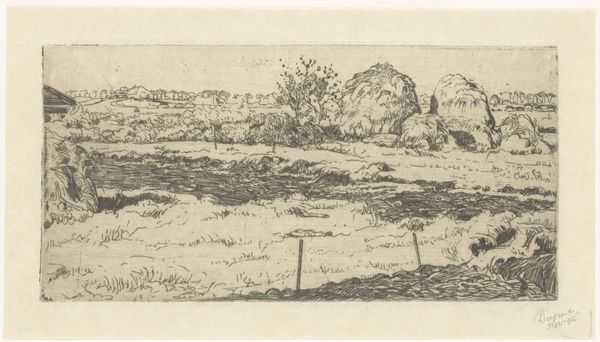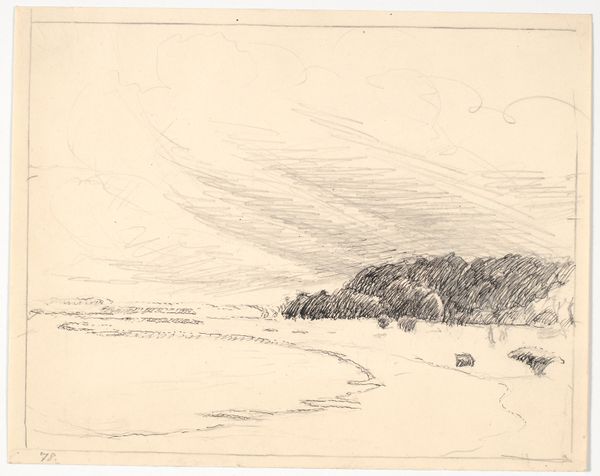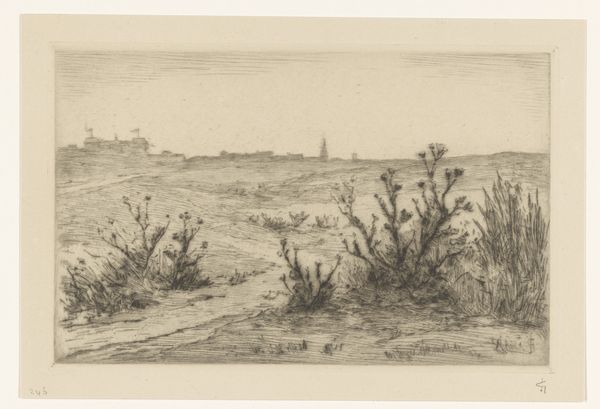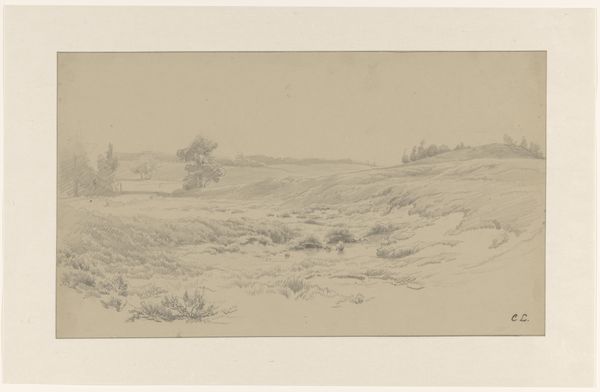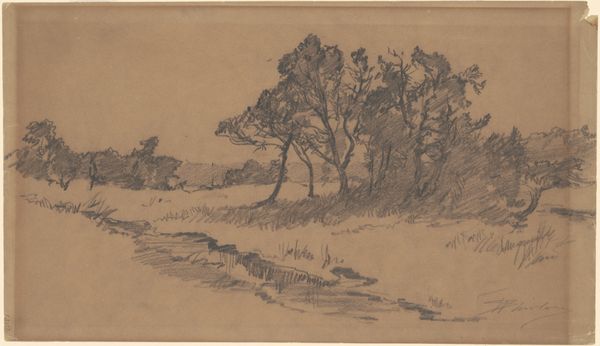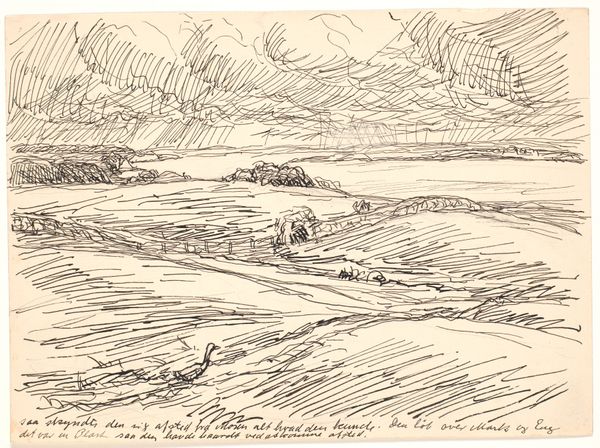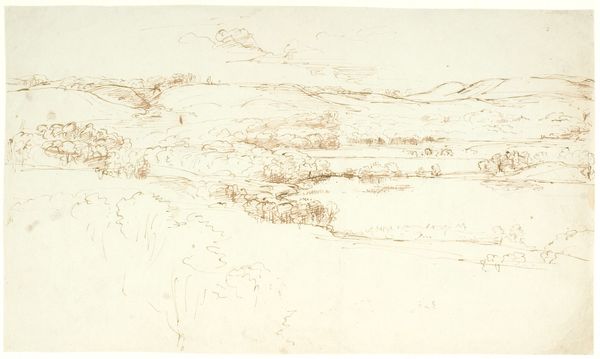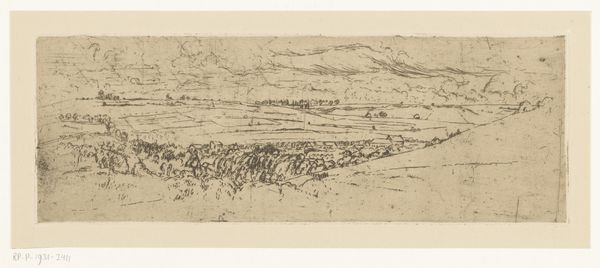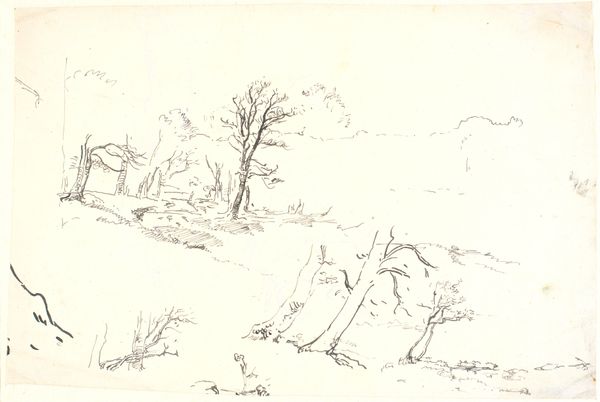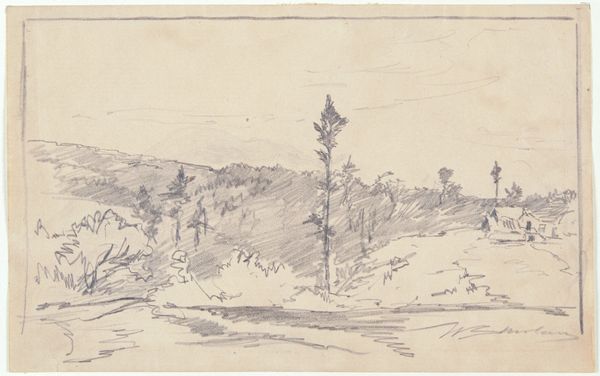
drawing, plein-air, ink
#
drawing
#
ink drawing
#
ink painting
#
plein-air
#
landscape
#
ink
#
realism
Dimensions: sheet: 33.81 × 56.2 cm (13 5/16 × 22 1/8 in.)
Copyright: National Gallery of Art: CC0 1.0
Curator: Walter Shirlaw created this pen and ink drawing, titled "A Road in the Hills Near Dordrecht," sometime between 1870 and 1877. Editor: My first impression is a sense of quiet melancholy. The monochromatic palette, the stark contrasts of light and shadow, and the receding road all evoke a feeling of solitude and perhaps even a bit of abandonment. Curator: Considering the time it was created, it reflects a growing shift away from grand Romantic landscapes towards a more intimate realism, one that valued observable truths of working the land, rooted in its material circumstances. This area, near Dordrecht in the Netherlands, would have been largely agricultural. What class is experiencing this landscape? Who had access? Editor: I am drawn to the ink work. Look at how Shirlaw varies the line weights and the density of hatching to create form and texture. The fence in the foreground seems almost tactile, while the distant hills are just suggested with the faintest of strokes. Notice, too, the artist’s almost impressionistic rendering of the foliage. How might our understanding of landscape change once seen en plein-air? Curator: Absolutely. And how that focus on immediate sensation impacts who and what becomes valorized as art. Landscape wasn’t merely scenery, it was also inextricably linked to labor, land ownership, and the control of resources, all of which are fraught topics in 19th century Europe. Editor: Yes, you can almost feel the uneven terrain underfoot through the mark-making on the paper. It's interesting to consider that Shirlaw, an American artist, chose to depict this European scene. What did it mean for him to represent a place so deeply tied to its own specific history and modes of making a life? How is it then represented back in America? Curator: The social context adds another layer of complexity, raising questions of how Americans are using artistic practice abroad, who those choices privilege, and what cultural dialogues and power imbalances they reinforce. What resources did this piece cost? Whose land provides them? Editor: It makes you consider all the labor that landscape elides—from the paper mill worker creating the ground for the work to be created to the artist practicing at his ease. Curator: This discussion has really underscored for me the layered implications within seemingly simple landscapes. Editor: Agreed, examining the processes involved encourages a deeper look into who shapes not only the material artwork but its cultural place, and what resources make them available for broader art viewing consumption.
Comments
No comments
Be the first to comment and join the conversation on the ultimate creative platform.
